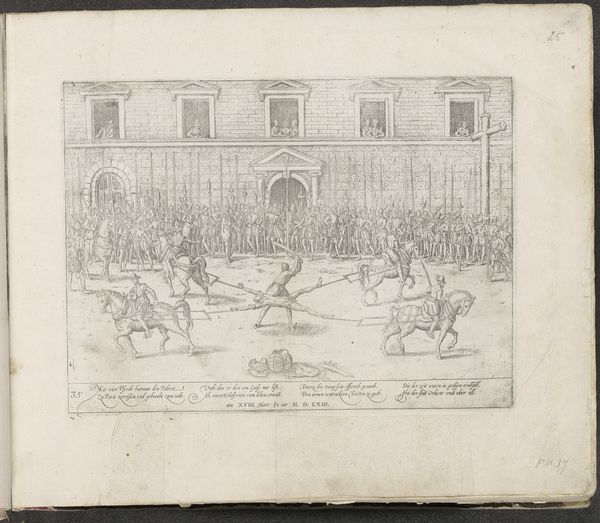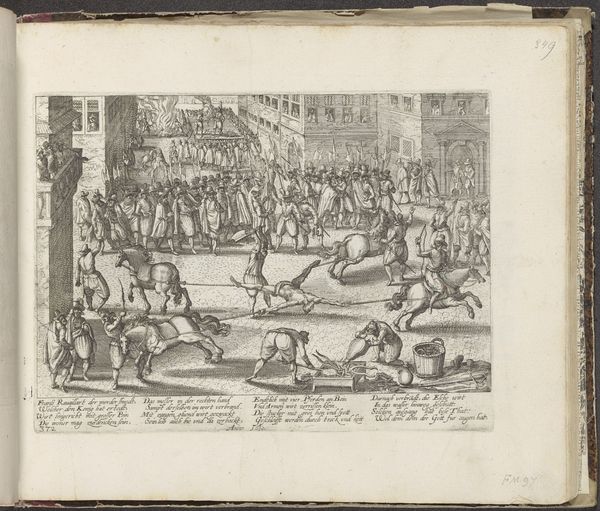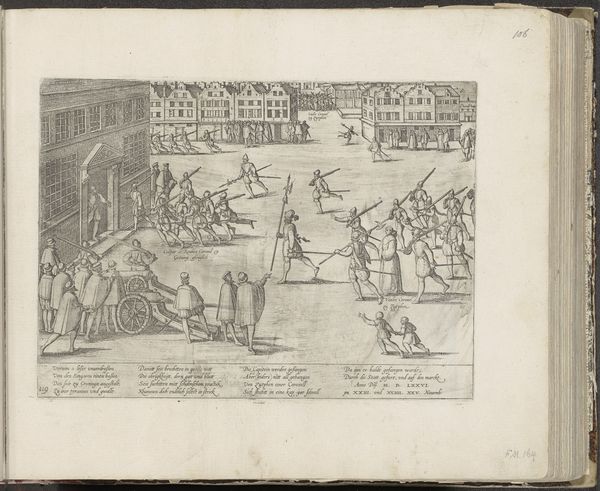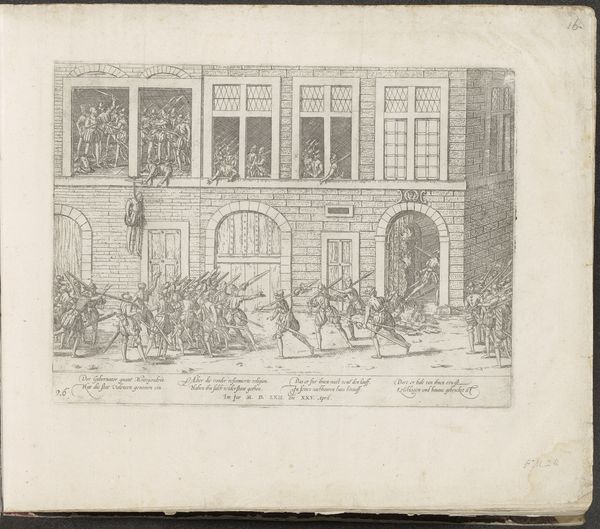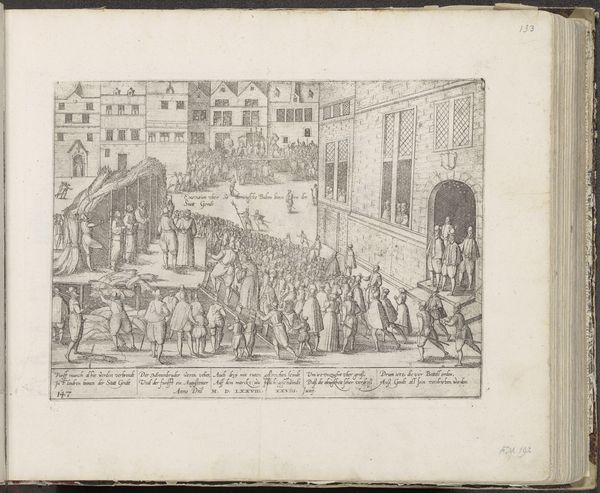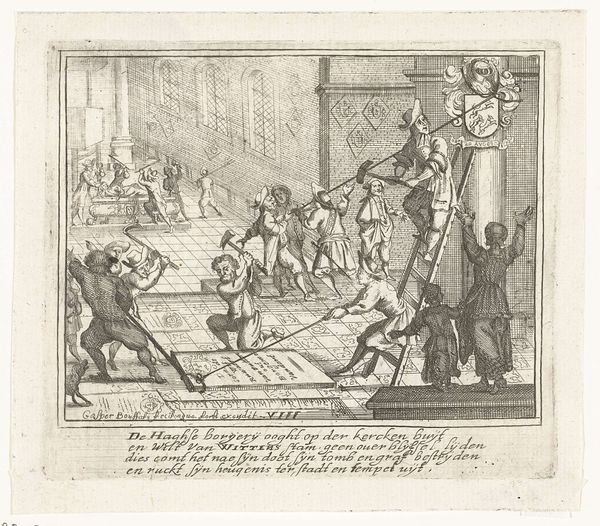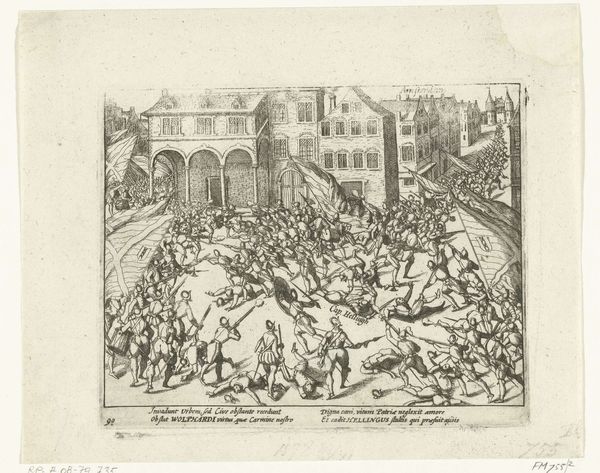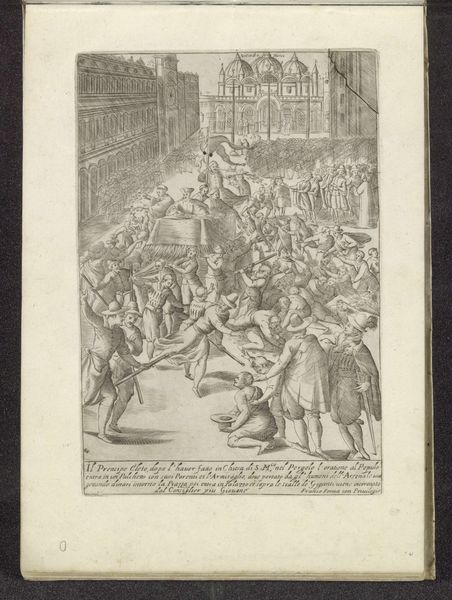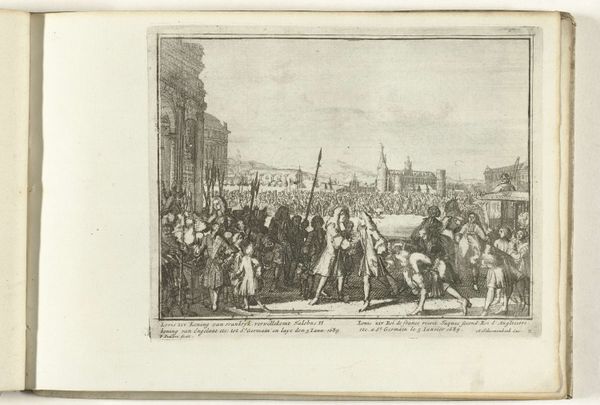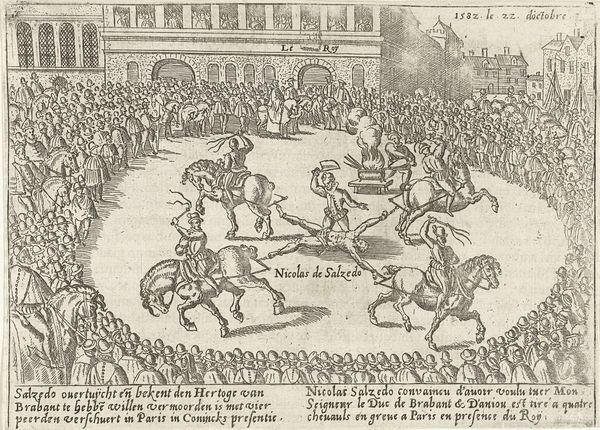
Dimensions: height 206 mm, width 277 mm
Copyright: Rijks Museum: Open Domain
This print by Frans Hogenberg from 1563 depicts the gruesome execution of Jean de Poltrot by quartering. It reveals the visual codes of power and justice in 16th-century Europe. Made in the Netherlands amidst religious and political upheaval, this image serves as a stark reminder of the period's brutal realities. Consider the rigid architectural backdrop, the ordered ranks of soldiers, and the impassive spectators. These details underscore the institutional nature of the execution, legitimizing it as a display of authority. The act of quartering itself, with horses tearing apart the condemned man, is a visceral representation of the state's absolute power over the individual. To fully understand this print, historians delve into legal documents, religious tracts, and political pamphlets of the time. These sources reveal the complex interplay of religious fervor, political intrigue, and social control that shaped the creation and reception of such images. This print reminds us that art is never neutral; it's a product of its time and a reflection of the forces that shape society.
Comments
No comments
Be the first to comment and join the conversation on the ultimate creative platform.
